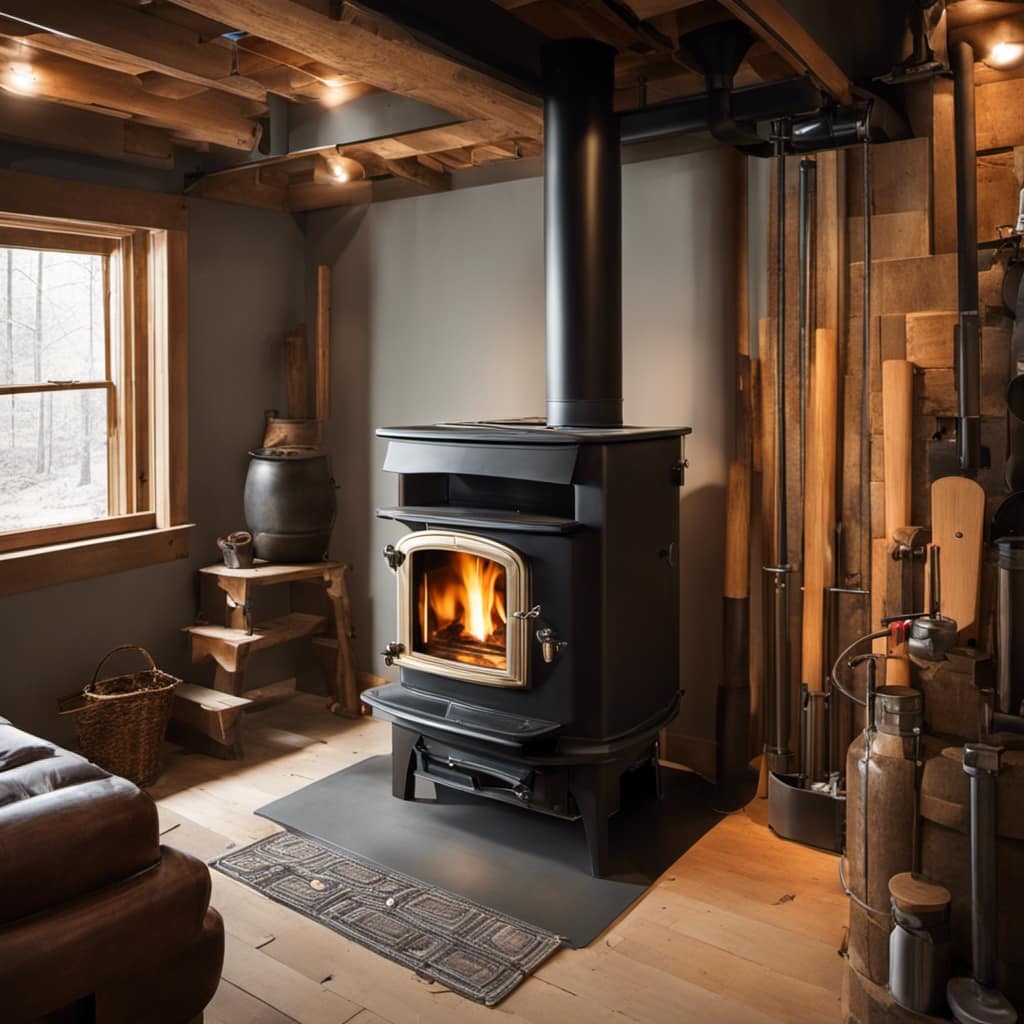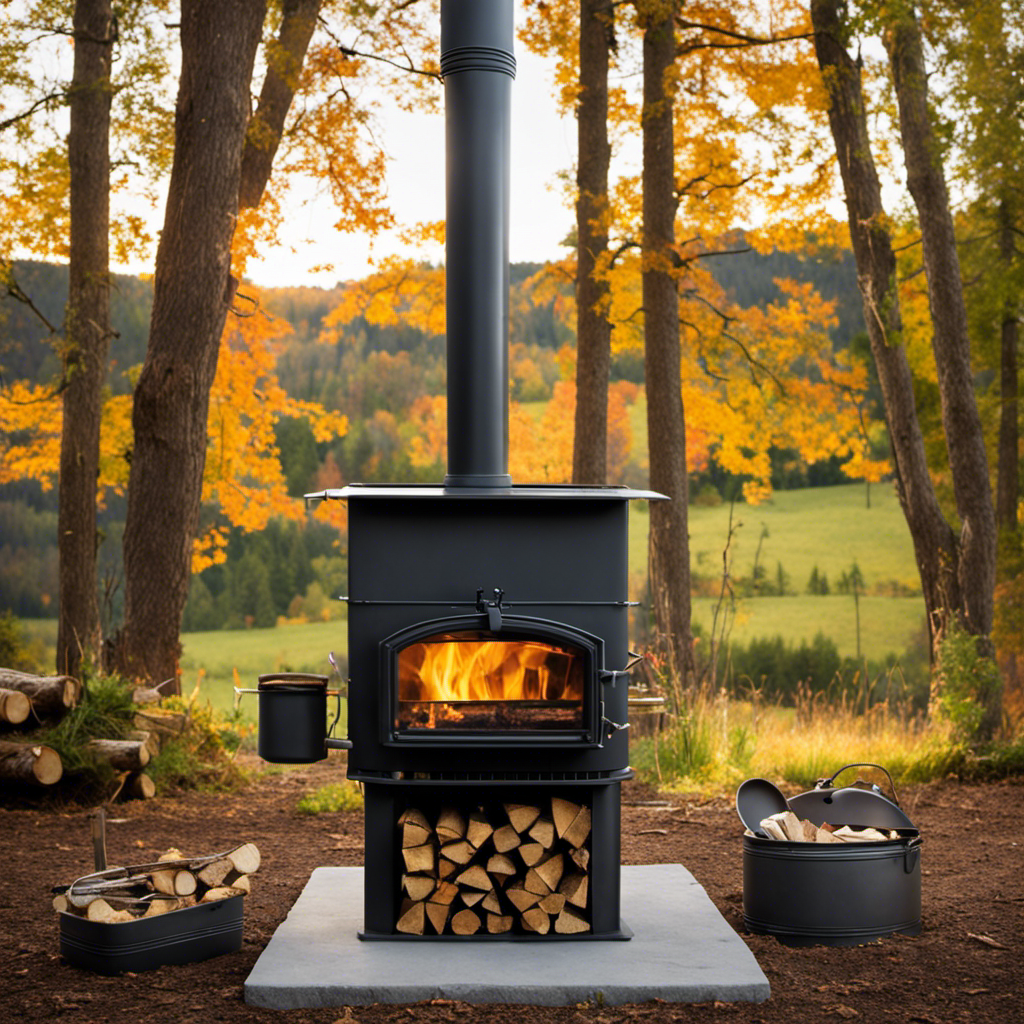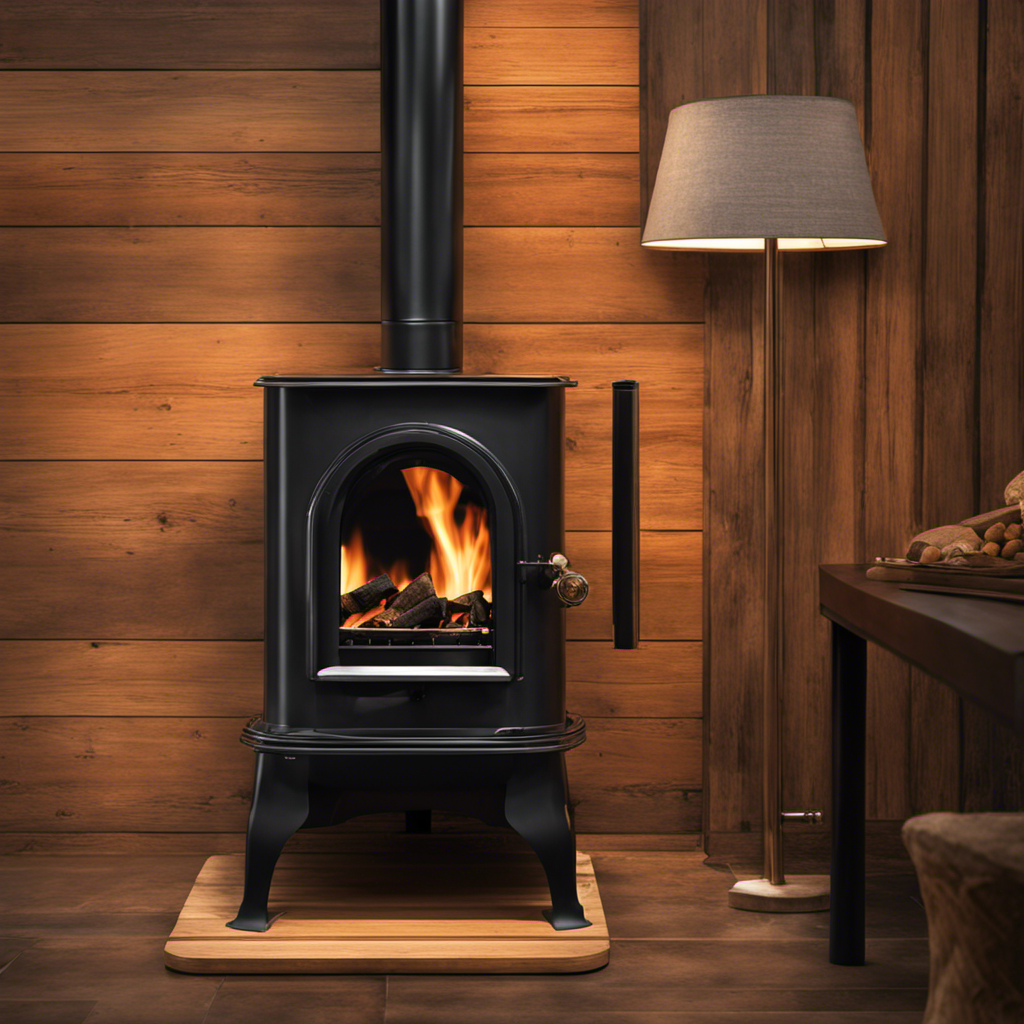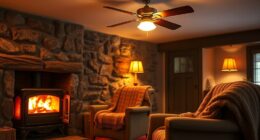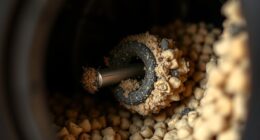Getting ready to install a wood stove chimney through your roof? Don’t worry! I’m here to help with this brief and informative guide.
In just a few simple steps, I’ll show you how to determine the perfect location, choose the right pipe, prepare your roof, and safely install the stove pipe.
Get ready to enjoy the warmth and coziness of your wood stove with confidence. Let’s get started!
Key Takeaways
- Measure the distance from the stove to the roof and determine the angle needed for the pipe
- Select high-quality materials designed for wood stove venting and ensure proper airflow and prevent leaks
- Prepare the roof by inspecting for damage, removing debris, and sealing the hole with high-quality roof flashing
- Install the stove pipe through the roof using roofing materials that can withstand the heat and weight, following local building codes and using proper brackets and supports
Determining the Proper Location for the Stove Pipe
I’m figuring out where to place the stove pipe for optimal ventilation.
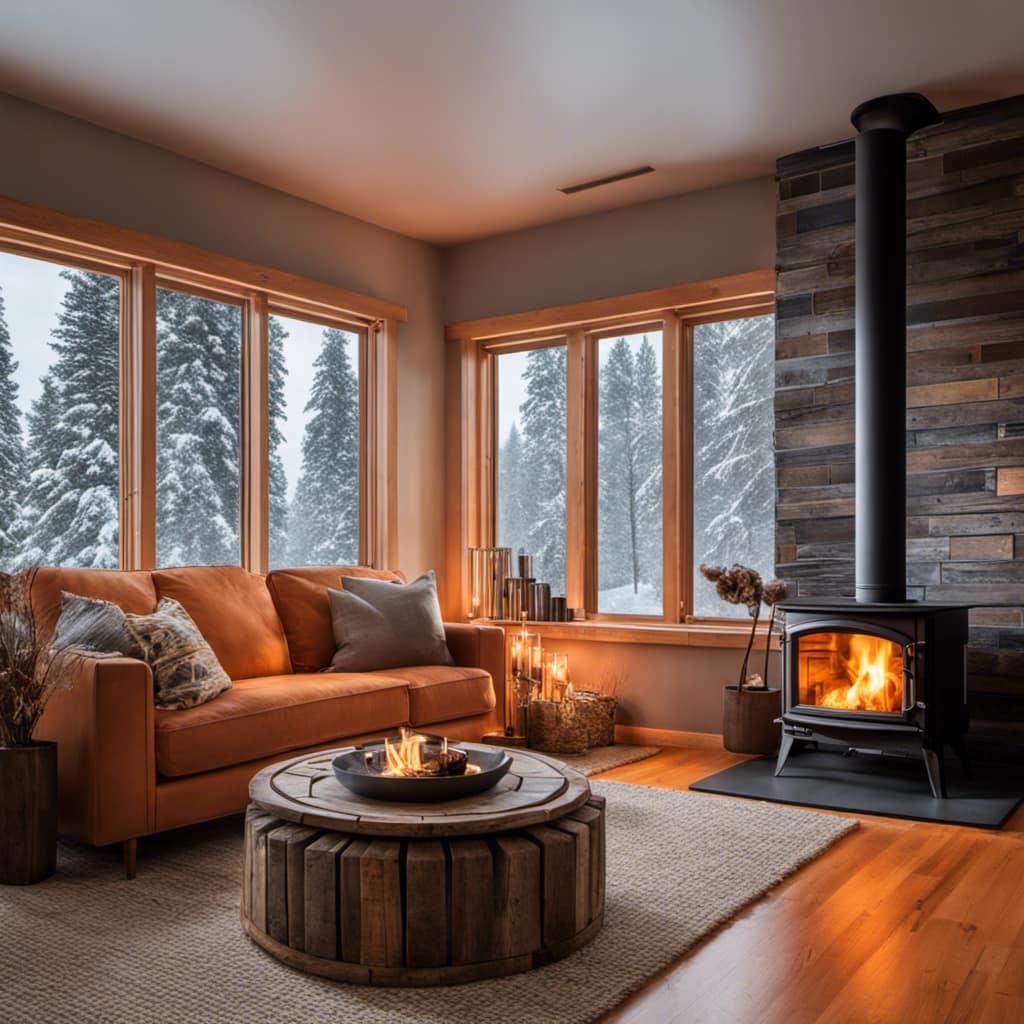
When installing a wood stove pipe through the roof, it’s crucial to select the right materials and follow precise measurements. The stove pipe is responsible for carrying the smoke and gases from the wood stove to the outside, so proper placement is essential for safety and efficiency.
To begin, I carefully measure the distance from the stove to the roof and determine the angle needed for the pipe. Then, I select high-quality materials that are designed for wood stove venting, ensuring durability and heat resistance.
With all the measurements and materials ready, I proceed to cut a precise hole in the roof to accommodate the stove pipe. This step requires accuracy to prevent leaks and maintain proper airflow.
Once the hole is cut, I can move on to choosing the right type of wood stove pipe for the installation.
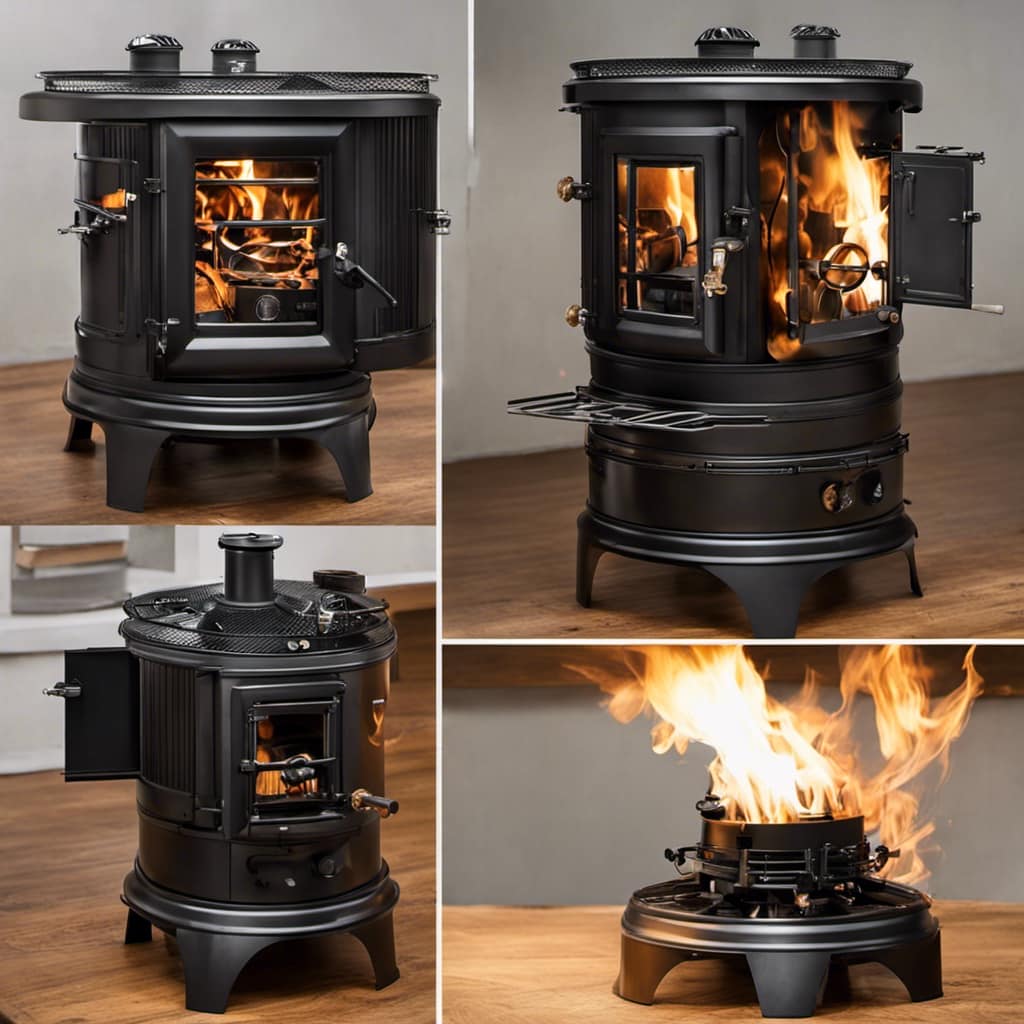
Choosing the Right Type of Wood Stove Pipe
After researching different options, I found that an 8-inch diameter double-wall wood stove pipe is the most suitable choice for my installation. This type of pipe is made from durable materials that can withstand high temperatures, ensuring the safe and efficient operation of my wood stove.
When installing a wood stove pipe, it’s crucial to consider proper insulation. Insulating the pipe helps to prevent heat loss and protects surrounding combustible materials from potential fire hazards. There are various insulation materials available, such as ceramic fiber blankets or insulation wraps specifically designed for wood stove pipes.
Here are four key considerations when choosing the right wood stove pipe:
- Diameter: Select the appropriate diameter for your stove to ensure proper ventilation and efficient performance.
- Material: Opt for a double-wall pipe made from high-quality materials to ensure durability and safety.
- Insulation: Insulate the pipe to prevent heat loss and minimize the risk of fire hazards.
- Installation: Follow the manufacturer’s instructions carefully to ensure a proper and secure installation.
Preparing the Roof for Installation
I’ll gather the necessary materials and tools for preparing the roof for installation. Roof preparation is a crucial step in ensuring a safe and successful installation of a wood stove pipe through the roof.
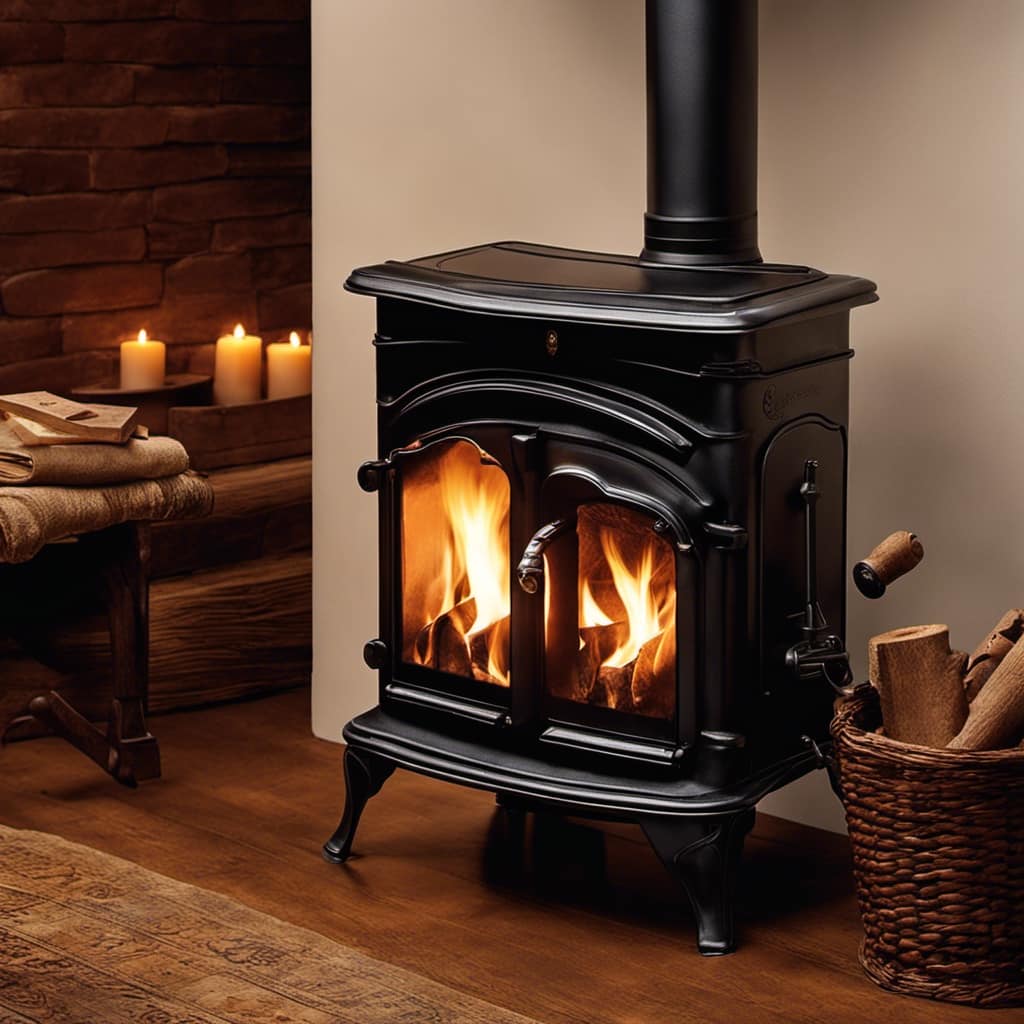
Safety precautions should be taken seriously to minimize any potential risks. First, I’ll need a ladder, safety harness, and appropriate footwear for working on the roof.
Before starting, I’ll carefully inspect the roof for any damage or weak spots. It’s important to remove any debris or obstructions that may interfere with the installation process.
Next, I’ll measure and mark the area where the stove pipe will penetrate the roof. I’ll then use a reciprocating saw to create a hole of the appropriate size.
Lastly, I’ll seal the hole with a high-quality roof flashing to ensure a watertight seal.
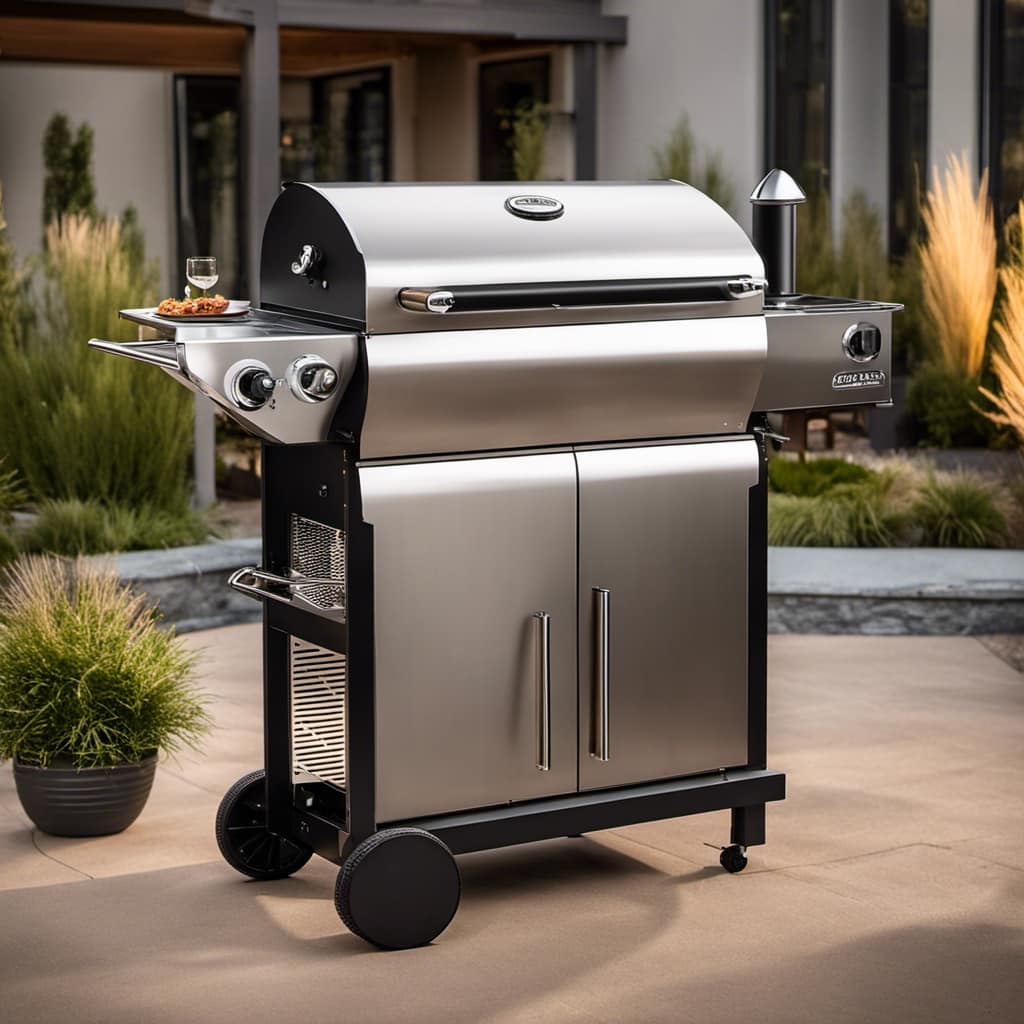
Installing the Stove Pipe Through the Roof
How can I ensure a proper and secure installation of the stove pipe through the roof?
Installing a stove pipe through the roof requires careful attention to detail and adherence to safety standards. Here are four key points to consider:
-
Choose the right roofing materials: Ensure that the roof is made of durable materials that can withstand the heat and weight of the stove pipe.
-
Proper chimney installation: Make sure the chimney is properly installed and meets local building codes and regulations.
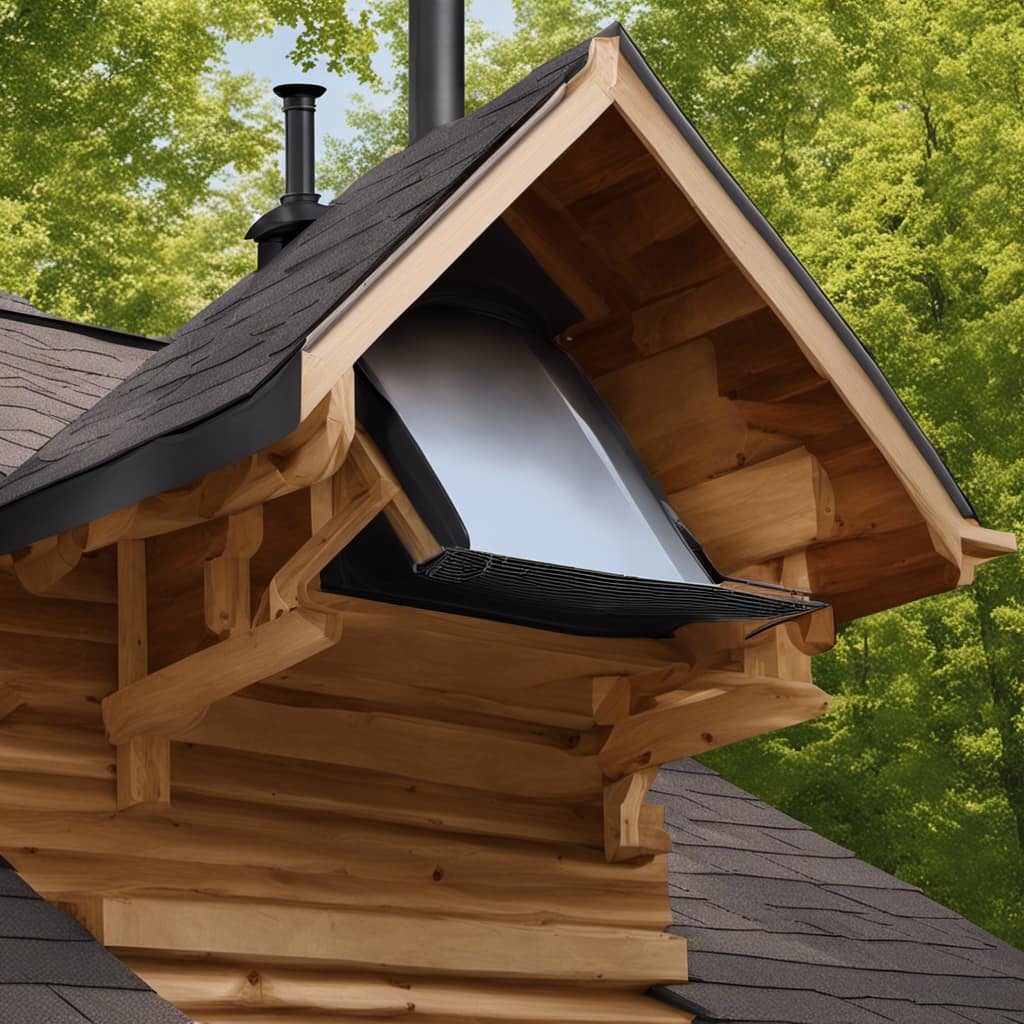
-
Use appropriate flashing: Install flashing around the stove pipe to prevent leaks and protect against water damage.
-
Secure the pipe correctly: Use high-quality brackets and supports to secure the stove pipe to the roof and prevent any movement or damage.
By following these guidelines, you can ensure a proper and secure installation of the stove pipe through the roof, providing a safe and efficient heating system for your home.
To ensure proper ventilation and safety measures, it’s essential to consider factors such as clearances, insulation, and carbon monoxide detectors.
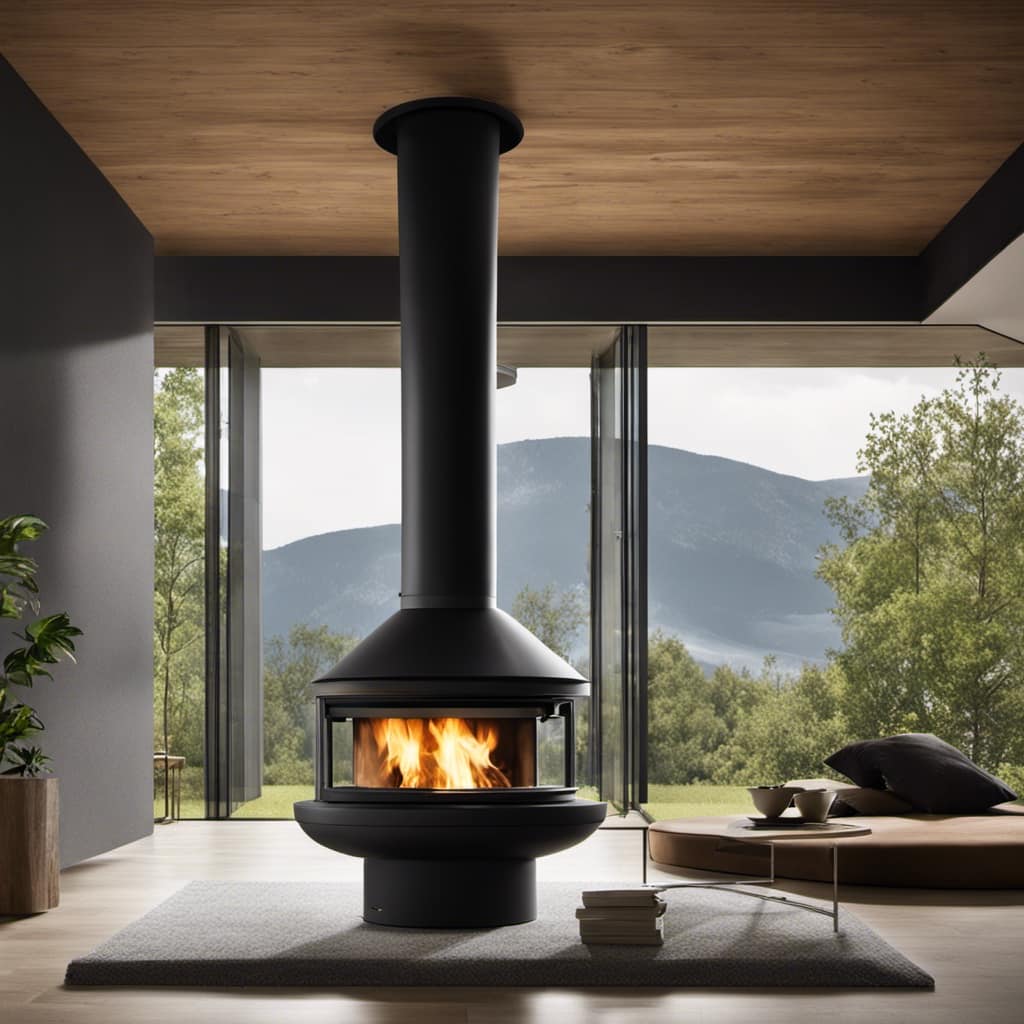
Ensuring Proper Ventilation and Safety Measures
To ensure proper ventilation and safety measures, I need to carefully consider the clearances and install carbon monoxide detectors.
When it comes to wood stoves, regular maintenance is of utmost importance. Neglecting maintenance can lead to various issues, including poor ventilation and the accumulation of harmful gases like carbon monoxide.
One common mistake that people often make is failing to clean the stove and chimney on a regular basis. This can result in the build-up of creosote, a highly flammable substance that can cause chimney fires.
Another mistake isn’t checking and replacing worn-out gaskets and seals, which can compromise the stove’s efficiency and safety.
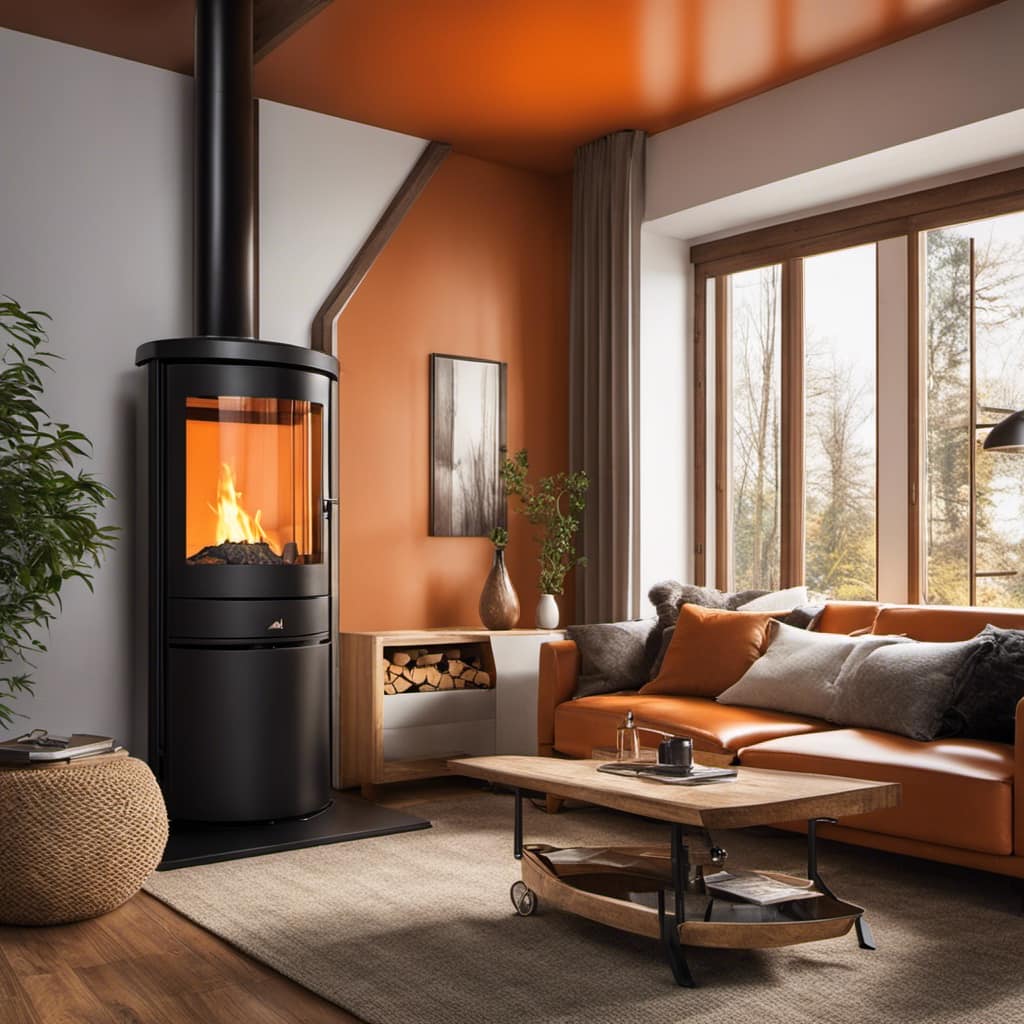
Additionally, it’s essential to check for any obstructions or blockages in the stovepipe, as this can hinder proper ventilation.
Frequently Asked Questions
Can I Install a Wood Stove Pipe Through a Wall Instead of the Roof?
Yes, you can install a wood stove pipe through a wall as an alternative to the roof. However, it’s important to note that roof installation has advantages such as better draft and reduced risk of fire hazards.
What Are the Different Types of Wood Stove Pipes Available in the Market?
There are different types of wood stove pipes available in the market, each with its pros and cons. When installing a wood stove pipe through the roof, it is important to follow proper installation tips to ensure safety and efficiency.
How Do I Clean and Maintain a Wood Stove Pipe?
Cleaning and maintaining wood stove pipes is crucial for safe and efficient operation. Regularly remove soot and creosote buildup using a chimney brush. Inspect for any signs of damage, such as cracks or leaks, and promptly repair or replace as needed.
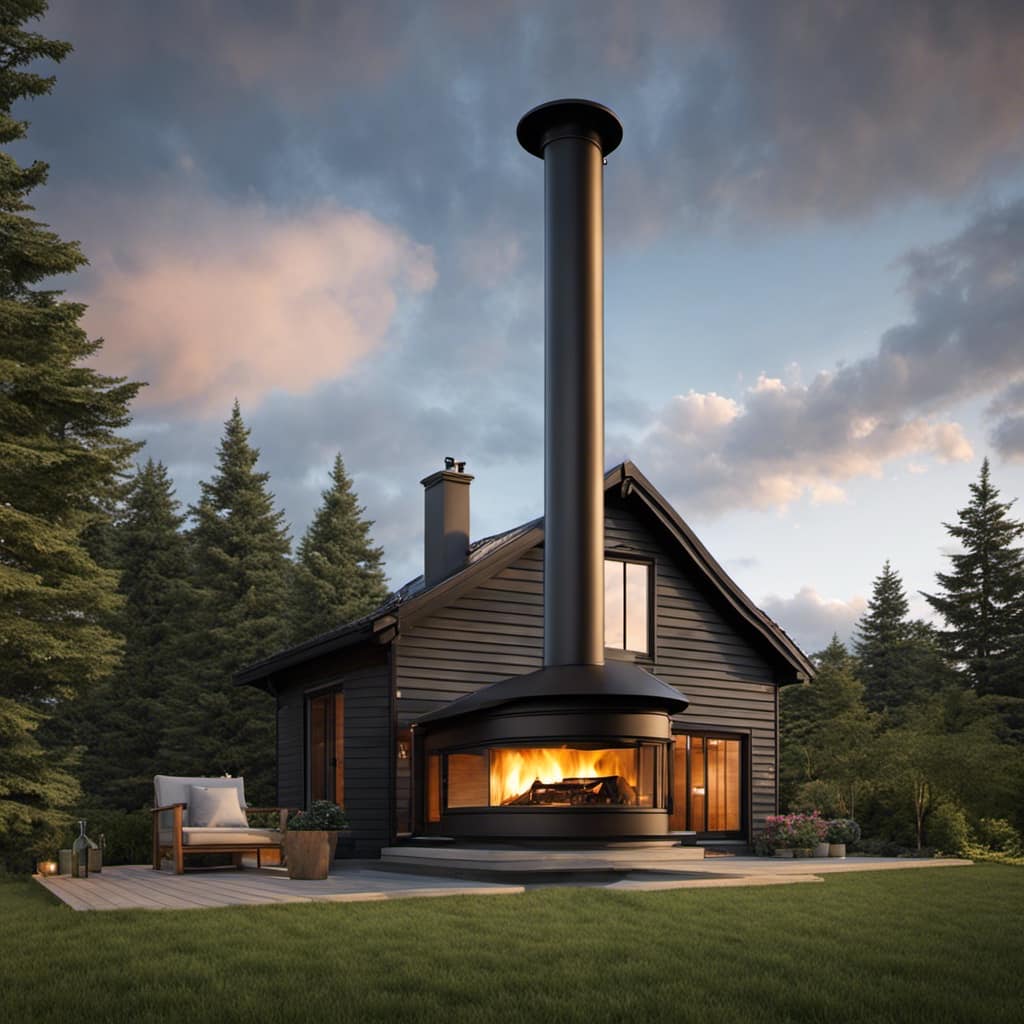
Can I Install Multiple Wood Stove Pipes Through the Same Roof?
Yes, you can install multiple wood stove pipes through the same roof. There are various venting options available, such as vertical or horizontal installations, depending on your specific needs and the layout of your home.
Are There Any Specific Safety Precautions I Should Take While Installing a Wood Stove Pipe?
When installing a wood stove pipe, it’s crucial to prioritize safety. Take necessary precautions such as wearing protective gear and using the right tools. Double-check everything to ensure a secure installation.
Conclusion
In conclusion, properly installing a wood stove pipe through the roof is crucial to ensure proper ventilation and safety.
By determining the right location, choosing the correct type of stove pipe, and preparing the roof accordingly, you can successfully complete the installation.
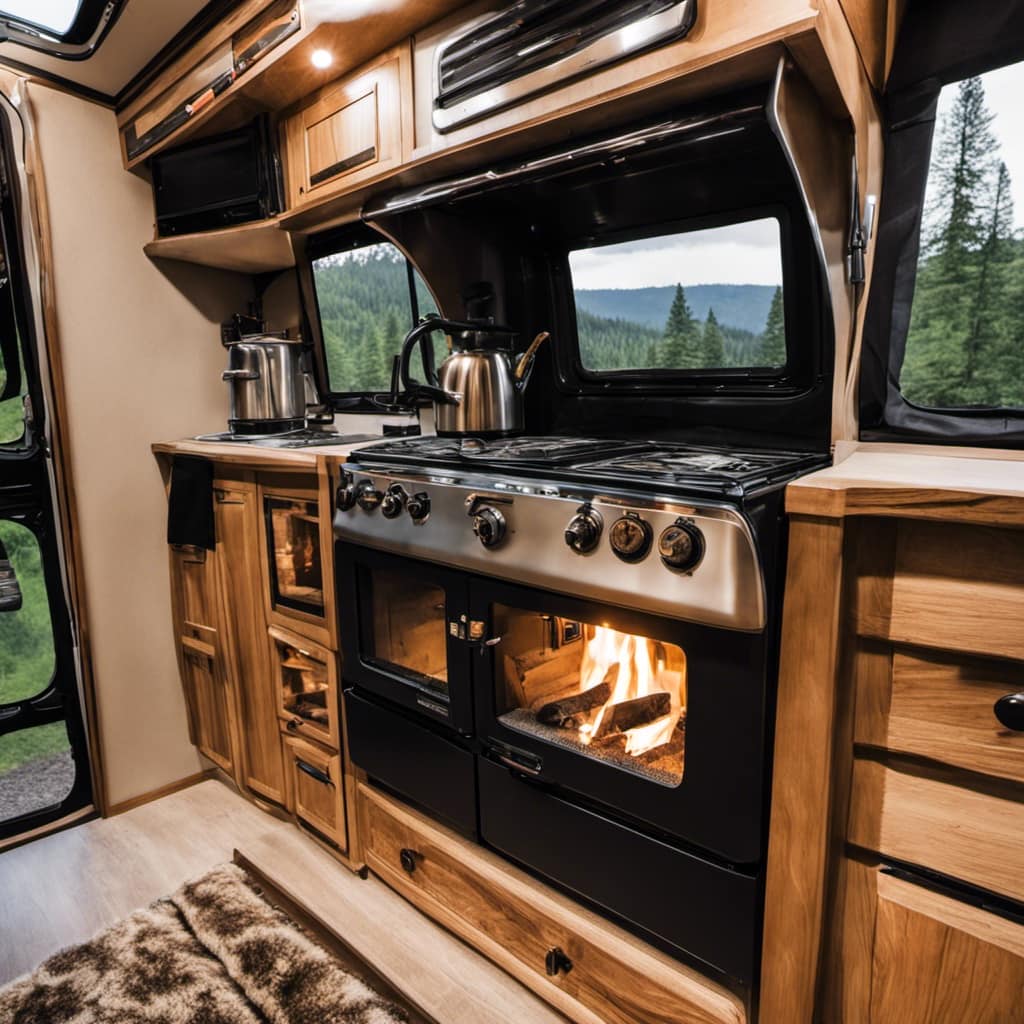
Remember to follow all safety measures and regulations to enjoy the warmth and coziness of your wood stove while keeping your home safe.
Stay snug and secure with a skillfully installed stove pipe!
Growing up surrounded by the vast beauty of nature, Sierra was always drawn to the call of the wild. While others sought the comfort of the familiar, she ventured out, embracing the unpredictable and finding stories in the heartbeat of nature.
At the epicenter of every remarkable venture lies a dynamic team—a fusion of diverse talents, visions, and passions. The essence of Best Small Wood Stoves is crafted and refined by such a trio: Sierra, Logan, and Terra. Their collective expertise has transformed the platform into a leading authority on small wood stoves, radiating warmth and knowledge in equal measure.


